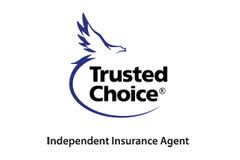Life
Method by which large groups of individuals equalize the
burden of financial loss from death by distributing funds to the
beneficiaries of those who die. Life insurance is most developed in
wealthy countries, where it has become a major channel of saving and
investing. There are three basic types of life-insurance contract.
Te rm insurance is issued for a specified number of years; protection
expires at the end of the period and there is no cash value
remaining. Whole-life contracts run for the whole of the insured's
life and also accumulate a cash value, which is paid when the
contract matures or is surrendered; the cash value is less than the
policy's face value. Endowment contracts run for a specified time
period and pay their full face value at the end of the period.
rm insurance is issued for a specified number of years; protection
expires at the end of the period and there is no cash value
remaining. Whole-life contracts run for the whole of the insured's
life and also accumulate a cash value, which is paid when the
contract matures or is surrendered; the cash value is less than the
policy's face value. Endowment contracts run for a specified time
period and pay their full face value at the end of the period.
There are personal uses of life insurance and business uses of life insurance. There are several life insurance policy riders* options that may be added to create customized protection.
*Policy rider - an endorsement to an insurance policy that
modifies the contract provisions of the policy. Life insurance
riders normally increase the benefits, but may also be written to
reduce benefits.
Term Life
Term Life Insurance is the simplest form of life insurance. It provides affordable protection for a specific period of time at a scheduled premium level. Premiums may increase at the end of the term.
You choose a coverage level, a term (usually 5, 10, 15, or 20 years) and name a beneficiary, that is, the person you want to receive the benefit if you die. If you die while your term life insurance policy is in force, the death benefit is paid to the beneficiary you chose.
At the end of the term, you can renew your coverage often at a higher premium, without having to provide evidence of good health. You can also convert it to a permanent life insurance policy which builds cash value and may earn dividends.
Term insurance can help you meet a number of personal and business needs and is often a good choice:
- when life insurance is essential but dollars are scarce
- to protect your family (insurance benefits can help pay a mortgage or fund a child’s education)
- for a well-defined period of time
- to protect your business (benefits can ensure business continuation by helping to cover business expenses)
Whole Life
Whole life is permanent life insurance protection that protects your family or business no matter what lies ahead, from the day you purchase the policy until you die, as long as you pay the premiums when due.
Whole life insurance can be a solid foundation upon which to build a long-term financial strategy because it guarantees a lifetime of protection for your family or business.
Generally, the death benefit can be used for:
- Mortgage protection
- Survivor needs
- Business needs
- Wealth transfer
- Charitable giving
The cash value of Whole Life policies can also be accessed2 during the insured’s lifetime for:
- Emergency and other needs
- Supplementing retirement income
- A down payment on a home
- College tuition expenses
Universal Life
Universal Life insurance is a flexible life insurance policy that combines the benefits of permanent life insurance protection and cash values with the convenience of adjustable premiums and payment schedules.* And, within a Universal Life insurance policy, cash value accumulations grow tax-deferred at competitive interest rates.
Generally less expensive than other permanent life insurance
but more expensive than term insurance, universal life gives you
the fle xibility to choose the amount of protection that best
suits your family or business, and it enables you to increase or
decrease your coverage level as your business or personal
insurance needs change. **
xibility to choose the amount of protection that best
suits your family or business, and it enables you to increase or
decrease your coverage level as your business or personal
insurance needs change. **
Variable Universal Life
Variable Universal Life insurance is similar to a traditional Universal Life policy in which premiums and death benefits are flexible; however, instead of a cash account, the excess cash is placed in a separate account or accounts as an investment.
Normally the policy owner is allowed to select the types of separate account(s) from those available within the policy (usually mutual funds). The owner of the policy is able to transfer funds between these accounts during the life of the policy. This enables the policy owner to choose where funds will be invested, allowing flexibility in the timing and amount of premium payments, and also providing more participation as well as responsibility.
The separate account(s) offered are grouped under account heading (generally called the family of funds) showing the actual investment participation and the historical performance of each account. Monthly and quarterly statements are provided to the policy owner. The information pertaining to the separate accounts is provided through the use of a prospectus.
A prospectus for the VUL policy is always provided to the prospective client showing detailed information on each of the separate account(s) (securities).
Family Policy
The family policy is a custom life insurance plan for all members of the family.
A Whole Life Policy is written on the wage earner (breadwinner) of the family with a level term policy to cover the spouse generally term to age 65. This coverage is generally guaranteed convertible while in force.
Level Term coverage is written on the child or children known as a Child Term Rider that provides coverage for all children who are 14 to 15 days old and a dependent member of the family. The maximum age of coverage is age 25.

Joint Life
A policy that is written to cover two or more lives. The death benefit is paid upon the death of the first insured person.
Joint Life provides income protection for spouses when both have earned income.
Joint Survivorship Life
A policy written to cover two or more lives. The death benefit is not paid until the death of the last insured person.
Joint Survivorship Life is often implemented for couples who plan to defer estate taxes until the second spouse dies.
Disclaimer
**The feature icons displayed are a summary for informational purposes only. Review the evidence of coverage and insurance policy (plan contract) for a detailed description of coverage benefits, limitations, and exclusions.**

